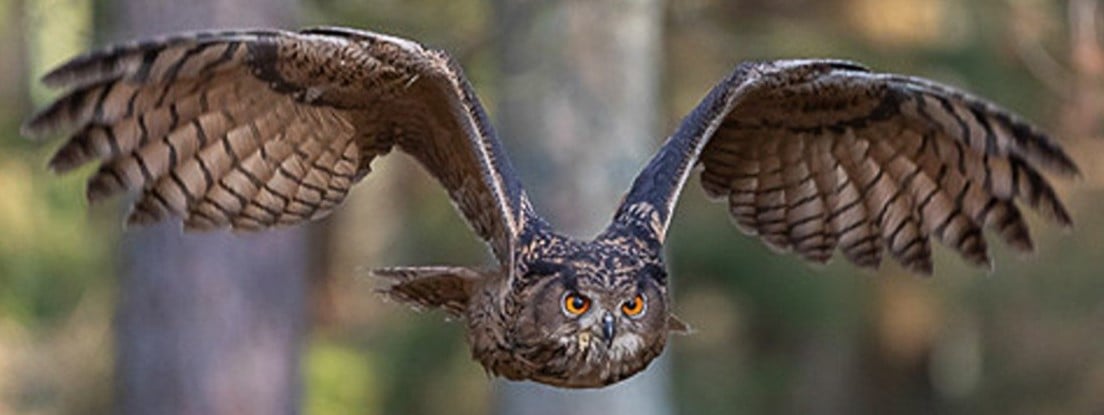Superbowl
For owls that are superb.

US Wild Animal Rescue Database: Animal Help Now
International Wildlife Rescues: RescueShelter.com
Australia Rescue Help: WIRES
Germany-Austria-Switzerland-Italy Wild Bird Rescue: wildvogelhilfe.org
If you find an injured owl:
Note your exact location so the owl can be released back where it came from. Contact a licensed wildlife rehabilitation specialist to get correct advice and immediate assistance.
Minimize stress for the owl. If you can catch it, toss a towel or sweater over it and get it in a cardboard box or pet carrier. It should have room to be comfortable but not so much it can panic and injure itself. If you can’t catch it, keep people and animals away until help can come.
Do not give food or water! If you feed them the wrong thing or give them water improperly, you can accidentally kill them. It can also cause problems if they require anesthesia once help arrives, complicating procedures and costing valuable time.
If it is a baby owl, and it looks safe and uninjured, leave it be. Time on the ground is part of their growing up. They can fly to some extent and climb trees. If animals or people are nearby, put it up on a branch so it’s safe. If it’s injured, follow the above advice.
For more detailed help, see the OwlPages Rescue page.
view the rest of the comments

Glad you liked it!
About the ecology, I can't point to anything particular that makes them thrive now. Something interesting that I left out of the post which I read in the article that wasn't available online, was that the owls eat different food in the Netherlands than in Germany. In Germany there are a lot of rodents, but in the Netherlands the rodents populations are smaller because of very intensive agriculture. Because of this, the Dutch owls eat more other species (they unfortunately did not specify what those species were).
One trend that is visible in nature in Western Europe is that smaller fauna are struggling, but larger species are doing really well. In the Netherlands we have seen reintroductions of not only the Eagle Owl, but also the white-tailed Eagle, the beaver, the otter and the wolf (and maybe the lynx too in the near future). On top of that we have seen big population increases of cranes, geese, deer and probably some more that I don't know about. This is mostly because of conservation efforts and hunting being banned.
And I didn't know that about the Kattenstoet, sounds very interesting!
That is good to hear about all the species. Many seem to be quite resilient if we actually give them a chance.
I like hearing about the differences between the European countries. I felt we pretty much just got the Magna Carta, Columbus, the French were our friends in the Revolution, and the 2 World Wars, mainly the second one, and that is about it for our European education. There are so many diverse cultures and ecosystems we don't hear about unless we seek them out ourselves, and even then, my brain keeps going back to thinking about it as one generalized place.
I watched a video of the modern Kattenstoet, and that seems much more pleasant. It's happening in a few days from now I believe as well. They do it every 3 years.